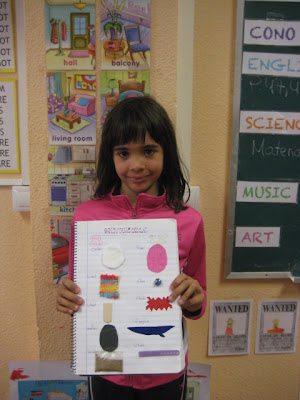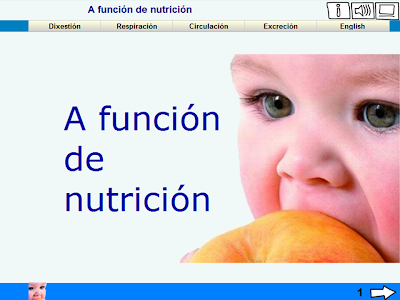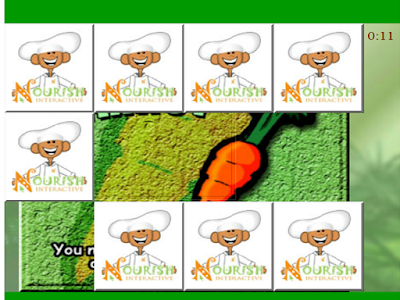ROMANS
A BUILDING FROM THE PAST
1. Write about an old building near where you live (Castilla y León or Spain).
2. Write a text describing the building.
Which period was it built in?
What was it used for?
What is it used for now?
How has this building changed?
3. Take photos or draw pictures to illustrate your text.
4. Present your write to the class.
This is a building from ___________. It is a _____________ and it was built by __________.
It is very ____________ and it is made of ______. It was used for __________ , and nowadays it is used for
Write a text about the forms of energy you use.
1. Think about:
- What forms of energy do you use every day?
- How do you use these forms of energy?
- Are these energy sources renewable or non-renewable?
2. Find photos or draw pictures to illustrate your text.
I use lots of different forms of energy every day.
I use kinetic energy to ride my bike, ...
I get kinetic energy from chemical energy in my food.
I use light energy to....
I get light energy from...
I use chemical energy to...
I get chemical energy from...
I use ...
Continue
UNIT 10: ENERGY AND FORCES
WHAT IS ENERGY
What is energy? Energy is the ability to do work.
We need energy for everything we do.
TYPES OF ENERGY
There are many different forms of energy:
- Electrical energy
- Thermal energy
- Light energy
- Kinetic energy
- Chemical energy
- Nuclear energy
RENEWABLE AND NON-RENEWABLE ENERGY SOURCES
What is a renewable energy source? A renewable energy source is a source of energy that will never run out.
What is a non-renewable energy source? ...
Remeber: Is it forever???
LIGHT
- Def: Light is a form of energy.
- Light sources: Sun (Natural), Bulb (Man-made) and candles (Man- made).
- Properties: Light travels in all directions, light travels in straight line and light travels very fast.
PROPERTIES OF MATERIALS DEPENDING ON HOW MUCH LIGHT THEY LET THROUGH:
Transparent - Translucent - Opaque
THE COLOURS OF LIGHT
Light looks white, but it is actually made up of seven colours: red, orange, yellow, green, blue, indigo and violet, the colours of the rainbow.
Primary colours: red, green and blue.
Secondary colours: magenta, cyan and yellow
Red plus Blue makes Magenta
Red plus Green makes Yellow
Blue plus Green makes Cyan
Watch this video: http://www.youtube.com/watch?v=I_3cQpJQU-s
_________________________________________________________________________________
UNIT 10: MATERIALS
1. MATERIALS:
- Natural materials: are found in nature. Ex. wood, leather, cotton, wool and sand.
- Man-made materials: are made by people. Ex. paper, glass or plastic
Paula! I need your notebook! Sorry:)
2. PROPERTIES OF MATERIALS:
- Flexible: It doesn't break --> Leather
- Strong: It can support a lot of weight and force --> Iron
- Elastic: It can be stretched an it returns to its original shape --> Rubber
- Light: It does no weigh much --> Aluminium
- Transparent: Light can pass through it, and you can see through it --> Glass
- Heat-resistant. It withstands high temperatures --> Steel
- Waterproof: It doesn't let water pass through --> Plastic
- Fragile: It breaks easily --> Glass
3. HOW WE USE MATERIALS:
Some materials are very versatile, they have different uses due to their different properties.
Ex. Plastics and metals.
4. GREEN MATERIALS
Green materials are materials that do not pollute the atmosphere and do not take too many resources away from nature. Ex. Bamboo
5. MACHINES
What is a machine? A machine is an object that help us to save time and energy.
How many types of machines are there? There are two types of machines: simple and complex machines.
What is a simple machine? A simple machine is a machine that has no or few moving parts.
What is a complex machine? A complex machine is a machine that has two or more simple machines working together.
Remember, Simple Machines are six: lever, wedge, inclined plane, pulley, secrew and wheel.
LEVER
WEDGE
INCLINED PLANE
PULLEY
PULLEY
SCREW
WHEEL
LEVER
WHEEL
LEVER
Ecosystems collages... using different materials!
4ºA
4ºB
ECOSYSTEMS
1. WHAT ARE ECOSYSTEMS?
An ecosystem is made up of all the living things and non-living things that interact together in a specific place.
- Living things: plants and animals
- Non-living things: all the elements that affect the plants and animals.
Habitat: Places where plants and animals find what they need to survive.
2. FOOD RELATIONSHIPS IN ECOSYSTEMS
- Producers: living things that make their own food. Plants.
- Consumers: living things that eat other living things. Animals
FOOD CHAIN
Animals as consumers http://lgfl.skoool.co.uk/content/primary/science/animals_as_consumers/index.html
THE UNIVERSE
THE UNIVERSE is related to:
- The Big Bang
- Celestial bodies
- The Solar System
- The Earth
- The Seasons
- The Moon
THE BIG BANG:
There are many theories about the origin of the world, but the most important theory is the Big Bang, the big explosion.
CELESTIAL BODIES:
- Stars
- Planets
- Satellites
- Comets
- Dwarf planets
THE SOLAR SYSTEM
Our Solar System consist of:
- The Sun.
- Eight planets.
- Planetary satellites, like the Moon.
- Comets.
- Asteroids.
Aquí os dejo este video genial que nos ha enseñado
nuestro compañero Alejandro, thanks!
Mercury, Venus, Earth, Mars, Asteroid belt,
Ceres, Pallas, Vesta and a bunch of other stuff
Jupiter, Saturn, Uranus, Neptune
Don´t forget about Pluto, Eris and a bunch of other stuff
Let's have a look to all this games, I hope you like them!
http://www.nasa.gov/audience/forkids/kidsclub/flash/index.html
http://www.astronomy.com/News-Observing/Astronomy%20Kids.aspx
 |
http://coolcosmos.ipac.caltech.edu/cosmic_kids/AskKids/index.shtml
http://www.sciencekids.co.nz/astronomy.html
 http://www.bbc.co.uk/schools/ks3bitesize/science/environment_earth_universe/astronomy_space/activity.shtml
http://www.bbc.co.uk/schools/ks3bitesize/science/environment_earth_universe/astronomy_space/activity.shtmlhttp://spaceplace.nasa.gov/en/kids/games.shtml
(really cool games to play and learn about space)
TO BE CONTINUED
_________________________________________________________________________________THE NUTRITION PROCESS
NUTRITION is a process and it is related to:
THE DIGESTIVE SYSTEM:
· Our body needs nutrients.
· We get nutrients through digestion.
. Our digestive system transforms food into nutrients.
. The organs of the digestive system are: mouth, (o)esopahgus, stomach, small intestine, large intestine and anus.
- The digestion: the digestive system.
- The breathing: the respiratory system.
- The blood circulation: the circulatory system.
- The excretion: the excretory system.
THE DIGESTIVE SYSTEM:
· Our body needs nutrients.
· We get nutrients through digestion.
. Our digestive system transforms food into nutrients.
. The organs of the digestive system are: mouth, (o)esopahgus, stomach, small intestine, large intestine and anus.
THE RESPIRATORY SYSTEM:
· Our body needs oxygen:
· We get oxygen through breathing:
· Our respiratory system gets oxygen from the air:
. The organs of the respiratory system are: nose, trachea, bronchial tubes and lungs.
THE CIRCULATORY SYSTEM:
· Blood is a very important liquid.
· Blood circulation transports nutrients and oxygen.
. The organs of the circulatory system are: the heart, veins, arteries and capillaries.
THE EXCRETORY SYSTEM:
· Our body needs to eliminate waste.
· We eliminate waste through the excretory system and the skin.
The organs of the excretory system are: kidneys, ureters, bladder and urethra.
GOOD HABITS FOR OUR BODY:
We should sleep 10 hours every night.
We should brush our teeth after eating.
We should have a shower every day.
We should wash our hands before eating.
We should drink lots of water.
we should eat fruit and vegetables every day.
We should eat 5 times a day.
We should exercise regularly.
We shoud wear warm clothes when it's cold.
We should cover our face when we are coughing.
We should sleep ten hours every night.
1. ACTIVITY:
How many lungs have we got? We've got.....
How many eyes have we got? We've got ...
How many feet have we got? We've got....
How many arms have we got?
How many hands have we got?
How many kidneys have we got?
How many hearts have we got?
How many heads have we got?
How many ears have we got?
How many stomachs have we got?
How many teeth have we got?
How many vertebrae have we got?
How many bones have we got?
2. ACTIVITY: What are the names of these organs?
3. ACTIVITY. LIM NUTRITION
4. INTERNAL ORGANS GAME
El pobre Arnold ha perdido los órganos de su cuerpo y su trabajo es recuperarlos. Atención porque la tarea no es fácil, debes estar atento y colocar los órganos del sistema que os pida.
5. HUMAN BODY ORGANS DIAGRAM GAME
SCIENCE: FOOD PYRAMID
Como xa sabedes para ter boa saúde é necesario levar unha dieta sa, variada e equilibrada. A pirámide nutricional axúdanos a saber que tipo de comidas e canta cantidade debemos inxerir a diario.
1. FATS AND OILS GROUP: they are foods like cakes, sweets and butter.
2. DAIRY GROUP: they are foods like milk, cheese and yogurt.
3.MEAT AND BEANS GROUP: they are foods like fish, meat and eggs.
4. VEGETABLES GROUP: they are foods like tomatoes, carrots and beans.
5. FRUITS GROUP: they are foods like oranges, apples and grapes.
6. GRAINS AND CEREALS GROUP: they are foods like rice, pasta and bread.
Na seguinte pirámide ollaredes as porcións diarias necesarias para cada un destes grupos. Canto máis abaixo da pirámide,máis porcións debemos tomar. SERVINGS = PORCIÓNS
FATS: These foods have a lot of sugar. Eat a little.
MEAT: Meat and eggs have proteins. Proteins help children grow. Eat two or three servings a day.
MILK: Foods from milk group have calcium.
FRUIT AND VEGETABLES: Fruit and vegetables come from plants. Eat four or five servings a day.
GRAINS: Grains give us energy. Eat five or six servings a day.
FOOD GAMES
"MY PLATE" : arrastra cada porción ou alimento ao prato.
"MATCHING FOOD GROUPS": xogo de memoria sobre os distintos grupos de alimentos.
"HIDDEN FOODS": deberás buscar a comida que che indica dentro de cada grupo de alimentos, deberás estar moi atento cando os pratos queden ao descuberto.
"BALANCED MEALS"
Entra na cociña e selecciona un menú saudable para cada unha das comidas do día. Cando remates comproba o ben que o fixeches facendo clic en "I think I've finished"
1. FATS AND OILS GROUP: they are foods like cakes, sweets and butter.
2. DAIRY GROUP: they are foods like milk, cheese and yogurt.
3.MEAT AND BEANS GROUP: they are foods like fish, meat and eggs.
4. VEGETABLES GROUP: they are foods like tomatoes, carrots and beans.
5. FRUITS GROUP: they are foods like oranges, apples and grapes.
6. GRAINS AND CEREALS GROUP: they are foods like rice, pasta and bread.
Na seguinte pirámide ollaredes as porcións diarias necesarias para cada un destes grupos. Canto máis abaixo da pirámide,máis porcións debemos tomar. SERVINGS = PORCIÓNS
FATS: These foods have a lot of sugar. Eat a little.
MEAT: Meat and eggs have proteins. Proteins help children grow. Eat two or three servings a day.
MILK: Foods from milk group have calcium.
FRUIT AND VEGETABLES: Fruit and vegetables come from plants. Eat four or five servings a day.
GRAINS: Grains give us energy. Eat five or six servings a day.
FOOD GAMES
"MY PLATE" : arrastra cada porción ou alimento ao prato.
"MATCHING FOOD GROUPS": xogo de memoria sobre os distintos grupos de alimentos.
"HIDDEN FOODS": deberás buscar a comida que che indica dentro de cada grupo de alimentos, deberás estar moi atento cando os pratos queden ao descuberto.
"BALANCED MEALS"
Entra na cociña e selecciona un menú saudable para cada unha das comidas do día. Cando remates comproba o ben que o fixeches facendo clic en "I think I've finished"














































muy buenos los videos
ResponderEliminar¡Gracias Jorge! ¡Eres el primero! Espero que os ayude a comprenderlo mejor. Por cierto, ya podéis cantar la canción "The respiratory system". :)
ResponderEliminarHola soy Luis. A mi tambien me han gustado mucho los videos y la canción Respiratory System.
ResponderEliminar¡Que guay!
ResponderEliminara mi tambien me gusta la cancion de Respiratory System
ResponderEliminarLa cancion del respiratory system mola mucho
ResponderEliminarA ver si podemos aprenderla enterita
ResponderEliminarEste blog es genial
ResponderEliminaryo tambien opino lo mismo
ResponderEliminarEs demasiado guay
ResponderEliminarteneis que verlo
ResponderEliminarLa cancion del respiratory system es una de mis canciones preferidas
ResponderEliminar¡Cuánto nos alegramos! Iremos subiendo más cositas, ¡muchas gracias chicos!
ResponderEliminarmuchas gracias Elsa
EliminarMuchas gracias Elsa
ResponderEliminarlo mismo digo
ResponderEliminarMOLA MUCHO
Eliminarmuy bueno lo nuevo
ResponderEliminarTAMBIEN OPINO LO MISMO . Jajajajajajajajajajajajajajajajajajajajajajaja
ResponderEliminarLas fotos te ayudan a estudiar mucho. Yo estudio con ellas.
ResponderEliminarA mi me gustan los videos. y las fotos me ayudan estudiar. ¡gracias Elsa!
ResponderEliminarlo mismo digo Paula y Javier.Ayudan mucho para aprenderlo muchisimo mejor
ResponderEliminar¡Gracias a vosotros por participar! Me alegro de ver caras nuevas:)
ResponderEliminarthank you very much Elsa
ResponderEliminarYou're welcome George! :)
ResponderEliminarthanks!!!!
ResponderEliminaryo tambien opino lo mismo chicos .La verdad esque ayuda muchisimo.
ResponderEliminarThanks Elsa
ResponderEliminaryo ya me se la cancion"respiratory system"
ResponderEliminaryo mas o menos
ResponderEliminarLet's go... :)
ResponderEliminaryes let's go
ResponderEliminarYa me la e aprendido
ResponderEliminaryo mas o menos pero estoy en ello :)
ResponderEliminarmañana hablamos a las 5:00 o las 5:30
ResponderEliminaraver si tienes suerte
ResponderEliminargraciaaaaaaaaaaaaaaaas Javichu:)
ResponderEliminarquiero decir Jorge ,estaba leyendo rapido y no me he dado cuenta sorry George:)
ResponderEliminarte perdono
ResponderEliminarEs Jorge no Javichu el del menbrichu
ResponderEliminarque gracioso Luis con lo de menbrichu
ResponderEliminarporque Javichu y menbrichu riman ¡como mola!
a que sí mola mogollón:)
ResponderEliminarDiana hoy a las 8 de la tarde
ResponderEliminarvale estoy deacuerdo
ResponderEliminarque guay mañana es viernes y se acaba la semana
ResponderEliminarbieeeeeeeeen today is Friday:)
ResponderEliminara qui no se conecta nadieeeee
ResponderEliminarhola chicos pronto bendran las bacacionesde semana santa.Espero qe llegen!
ResponderEliminarXD
si pronto llegaran y sera jeniai verdad
ResponderEliminarPaula bacaciones no se escribe así se escribe con V
ResponderEliminar